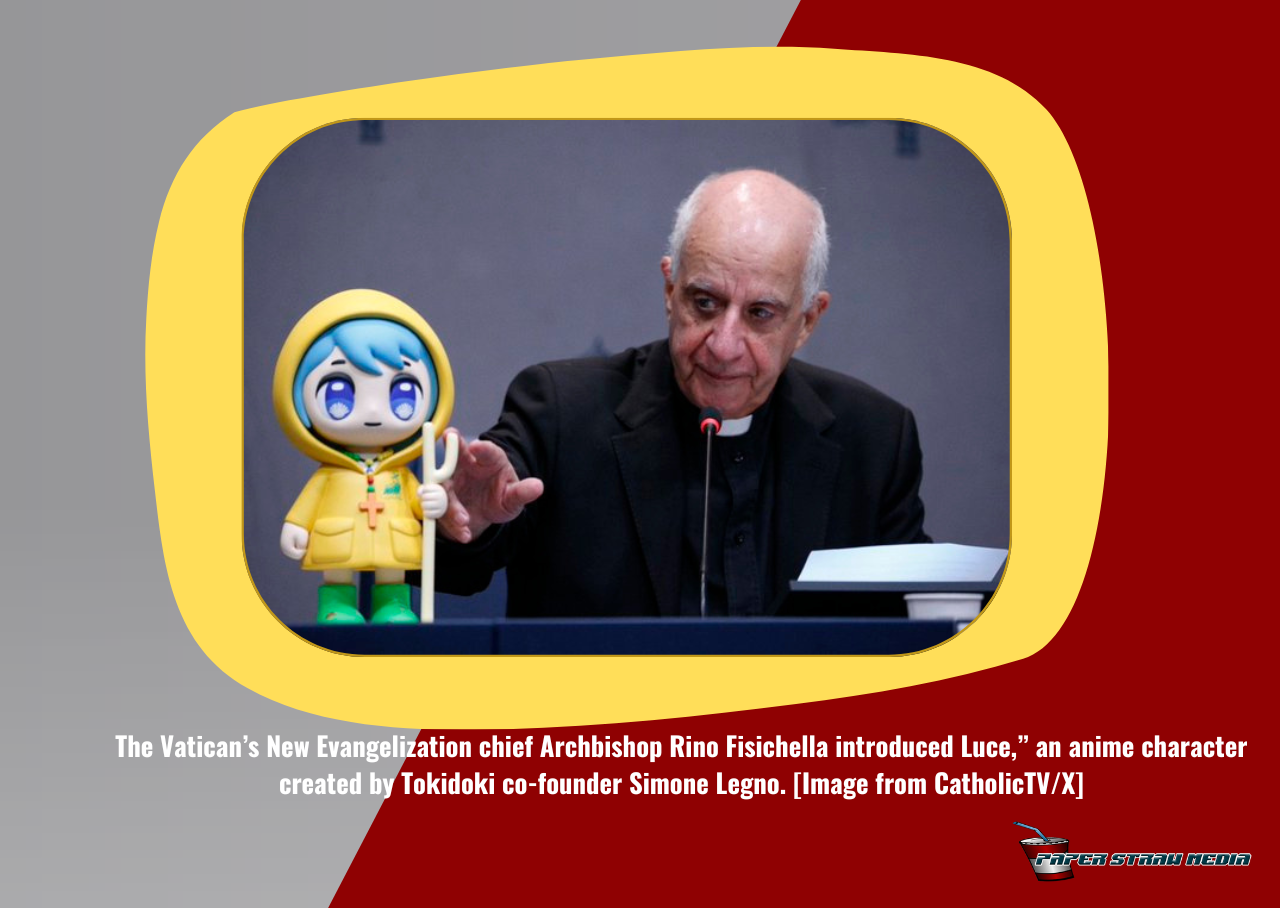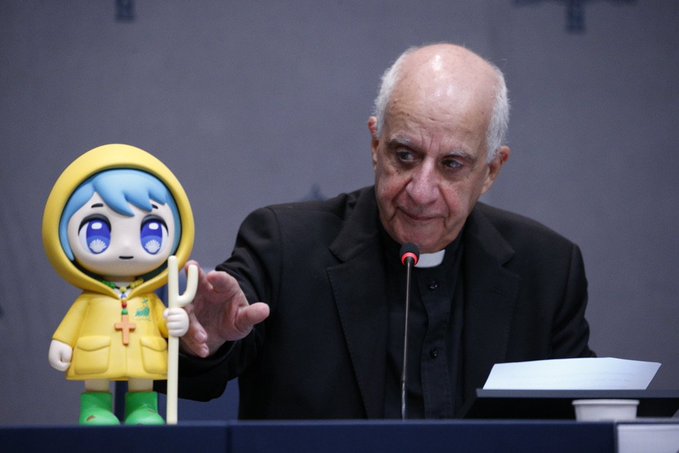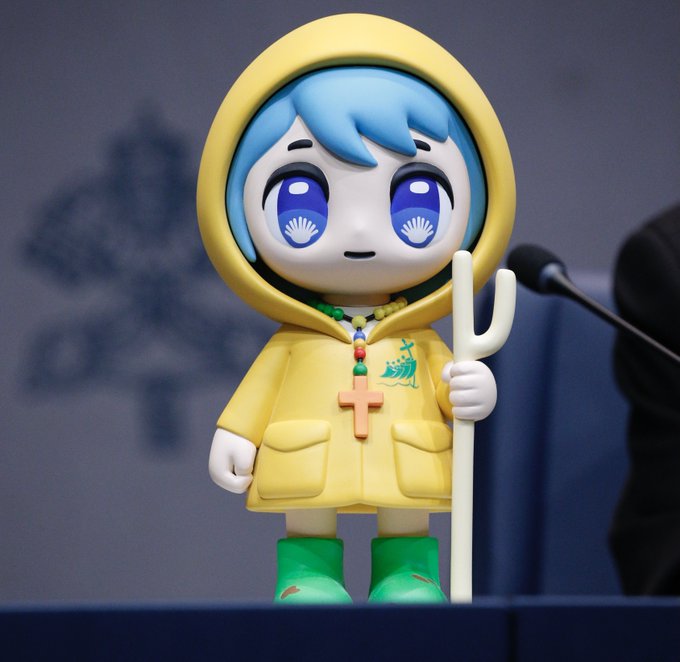
Vatican Introduces “Luce” as Catholic Church’s “Kawaii” Jubilee Year Mascot
The Catholic Church is celebrating its ordinary jubilee year in 2025, and to officially make a soft launch of the event, the Vatican announced on Monday (Oct. 28) the introduction of “Luce” (pronounced “lu-che”), an anime-style female mascot designed by Tokidoki co-founder Simone Legno.
According to the Holy See’s event website, the character was “designed to reflect pop culture” and bring “a message of hope and welcome” to the young and young adults, specifically anime fans, and to the rest of its congregations.
The Vatican has unveiled the official mascot of the Holy Year 2025: Luce (Italian for Light).
Archbishop Fisichella says the mascot was inspired by the Church’s desire “to live even within the pop culture so beloved by our youth.” pic.twitter.com/hVU2CmYA3O
— CatholicTV (@CatholicTV) October 28, 2024
Coincidentally, Luce (Italian for “light”) was launched on the memorial for the beatified 20th-century teenage confessor Chiara “Luce” Badano, who herself shares the date of the feast of Sts. Simon the Zealot and Jude Thaddeus, apostles of Jesus Christ mentioned in the Christian Bible.
A jubilee year is normally celebrated in the Catholic Church every 25 years, thus calling them “ordinary jubilees.” The last of which happened in 2000 during the reign of Pope John Paul II. These jubilee years are distinct from “extraordinary jubilees,” which popes call outside the 25-year interval, such as the 2016 “Extraordinary Jubilee Year of Mercy” declared by Pope Francis.

Luce and Friends
Legno designed Luce as a blue-haired, scallop shell-eyed pilgrim clad in a yellow raincoat and green boots dirtied by mud and with what could be described as a rosary around her neck. She holds a pilgrim’s staff in one of her hands, which some pundits call a “bordone,” which serves a practical purpose, such as hanging one’s hat or drinking flask. Luce’s scallop shell-shaped pupils are also reminiscent of the symbol of the Camino de Santiago, one of Christianity’s most important pilgrimage routes culminating in the northwestern Spanish city of Santiago de Compostela, where Catholics believe the relics of St. James the Great (more known as one of the two sons of Zebedee in the Bible) were located.
It is understood that Luce and her other similarly-dressed animated friends — Fe, Xin, and Sky — and her dog named Santino would make their official debut as the representative of the Vatican at this year’s Lucca Comics and Games, an annual Italian otaku event. The anime mascots would also represent the Vatican at Expo 2025 in Osaka, Japan, alongside Caravaggio’s painting “The Entombment of Christ,” which the Vatican Museums have temporarily loaned for the event.
EWTN-owned news outlet Catholic News Agency reportedly cited the Vatican’s New Evangelization chief, Archbishop Rino Fisichella, when the mascot was revealed in a press conference Monday, Oct. 29.

“[Luce and her friends] will allow us to speak to younger generations about the theme of hope, which is more central than ever in the evangelical message,” he told reporters.
The Catholic Church’s 2025 jubilee year theme is “Pilgrims of Hope.”
For his part, Legno, who formed Tokidoki in response to his intense interest in Japanese culture in general, hoped that Luce would resonate with younger Catholics, especially Japanophiles.
“To be honest, I could never have imagined that I would bring my humble artistic contribution, pop-culture, kawaii-culture to the Holy See,” he said in an Instagram post. “I am extremely grateful to the Dicastery for Evangelization for opening its doors to pop culture as well.”
The Dicastery for Evangelization refers to the Vatican ministry responsible for spreading the Catholic faith worldwide.

Cheers from Otakus, Jeers from Traditionalists
Reception for Luce and Friends was mixed depending on individual perspective and ideology.
AnimeHunch reported that some social media users made meme comments, claiming that the Vatican had an anime mascot before the release of TakeTwo and Rockstar’s anticipated game “Grand Theft Auto 6,” or that it now has both “the power of God and anime on [its] side.” Some even called Luce a Catholic “waifu” (otaku shorthand for anime wife material) or even compared her to Ai Ohto from the anime series “Wonder Egg Priority” or Joy from Disney’s “Inside Out” franchise.
Some anime aficionados even made artistic replications of Luce, ranging from wholesome and “kawaii” (Japanese for “cute”) to “Rule 34” explicit versions. At the same time, crypto enthusiasts have created a memecoin named after her.
On the other hand, more tradition-minded Catholics have had a field day criticizing the Vatican’s mascot concept.
Michael Haynes, senior Vatican correspondent for conservative outlet LifeSiteNews, highlighted on X (formerly Twitter) that Tokidoki actively promoted LGBTQ+ Pride despite Legno claiming his Italian Catholic heritage.
NEW: Vatican unveils the official mascot for 2025 Jubilee year, as prep increases & pre-Jubilee events approach.
It’s designed by Tokidoki creator Simone Legno, who highlights his Italian Catholic heritage. His company promotes Pride month. pic.twitter.com/9NM5IV6MtK
— Michael Haynes 🇻🇦 (@MLJHaynes) October 28, 2024
Most of the comments opposing the launch of Luce and Friends also claim that the “bordone” staff on the mascots’ hands were witch’s stangs; the enlarged chibi eyes related to the art style of Slovenian priest and alleged sex offender Mario Rupnik, and “Luce” being a shortened name for “Lucifer,” a name synonymous to Satan, thus claiming the whole project diabolical.
There were also level-headed commentaries expressing more concern about the matter than outright condemnation.
Catholic writer Jong Esto wrote on his website Epistles Philippines that he still acknowledges the Vatican’s effort to make the Catholic Church more relevant to younger people despite being concerned about sidelining the church’s more traditional apostolates and efforts, which also target and attract younger Catholics.
“While some may argue that the time and money spent on this initiative could be better used for traditional ministry activities (celebrating Mass, Confession, etc.), the potential to connect with a broader audience and inspire hope in young people somehow justifies the investment,” he said. “[W]hile the Vatican’s approach may not align with traditional methods of evangelization, it represents a creative and inclusive effort to engage with the youth. By embracing pop culture, the Vatican aims to make the message of hope and faith more relatable and accessible to the next generation.”
Meanwhile, Filipino Catholic pundit Carlos Antonio Palad found the apparent disdain of some traditionalist Catholic circles for pop culture and the fault-finding initiated by some of them asinine.
“If you think ‘Luce’ is cringe or funny or weird, fine. I’m hardly a fan myself,” he stressed on Facebook. “But trying to look for the diabolical in it is just too much.”
A tradition-minded Catholic also made a reply tweet to Haynes’s original post, expressing disappointment with the purported claims some traditionalists accuse the Vatican’s Luce project of.
To the prideful extremist trads and sedevacantists, this is to reach the youth. As corny as this may be, some of you complain just to complain and it’s kind of weird
— Ave Christus Rex (@AnimaChristi24) October 28, 2024
“To the prideful extremist trads and sedevacantists, this is to reach the youth,” the user emphasized. “As corny as this may be, some of you complain just to complain and it’s kind of weird.”